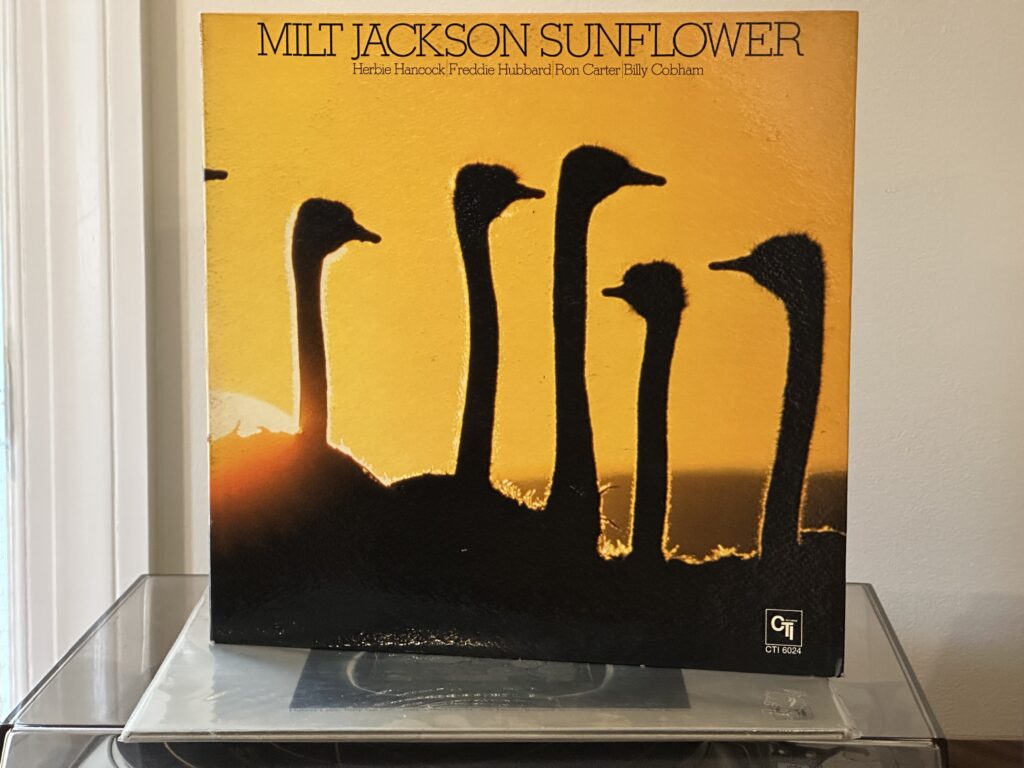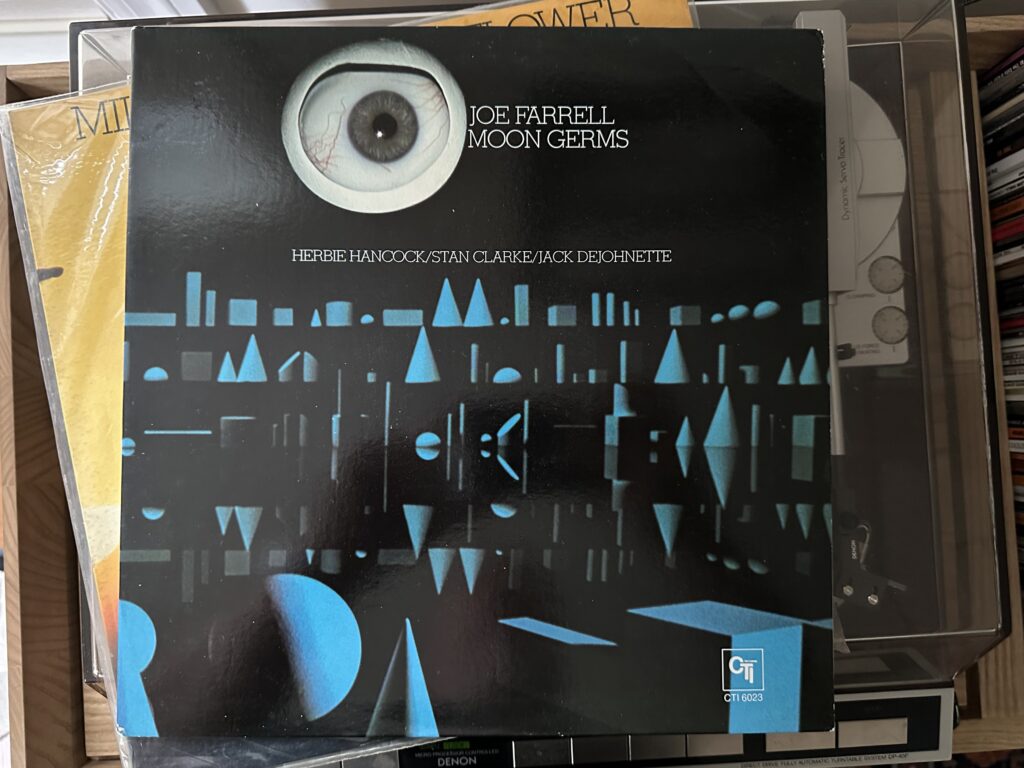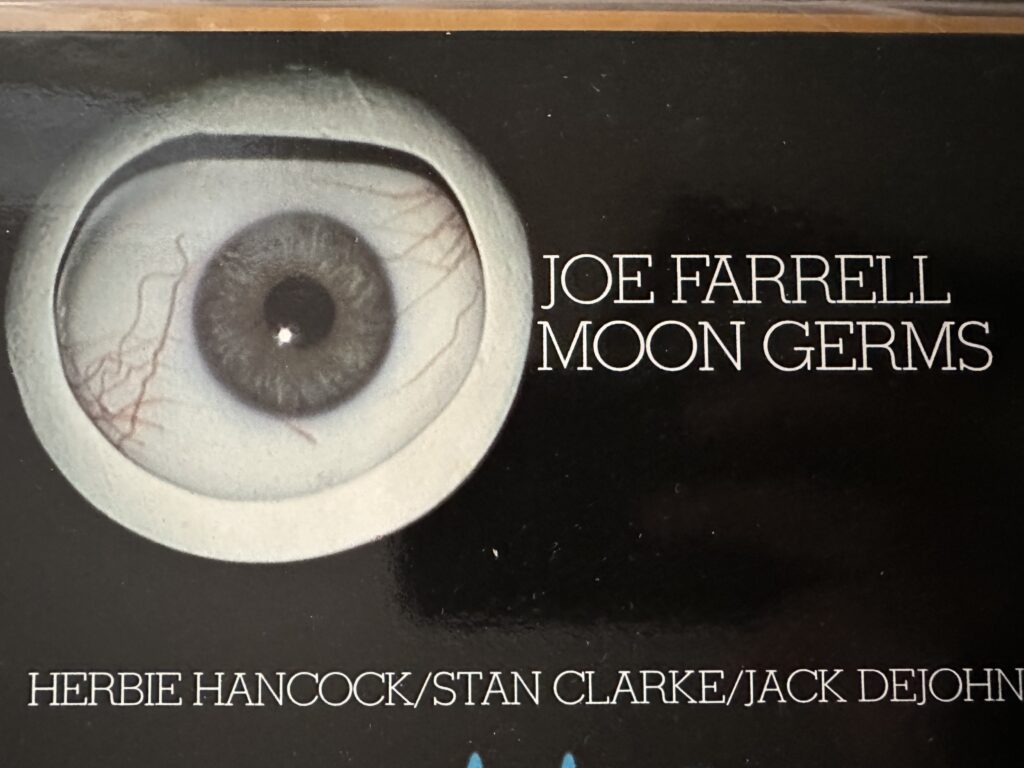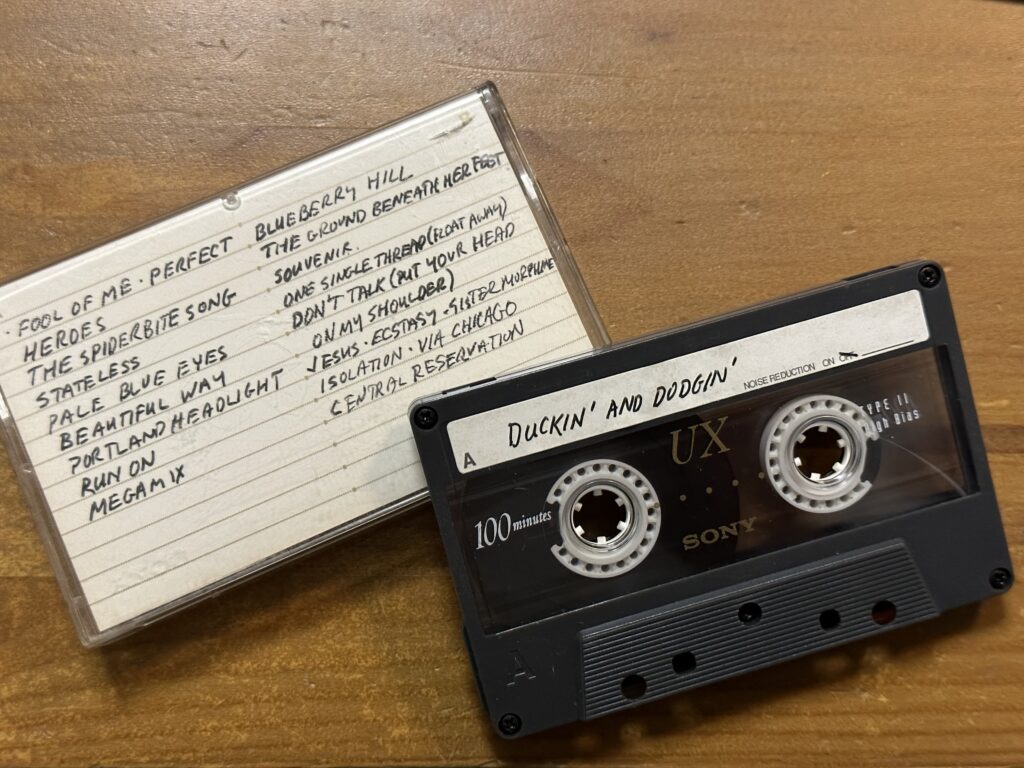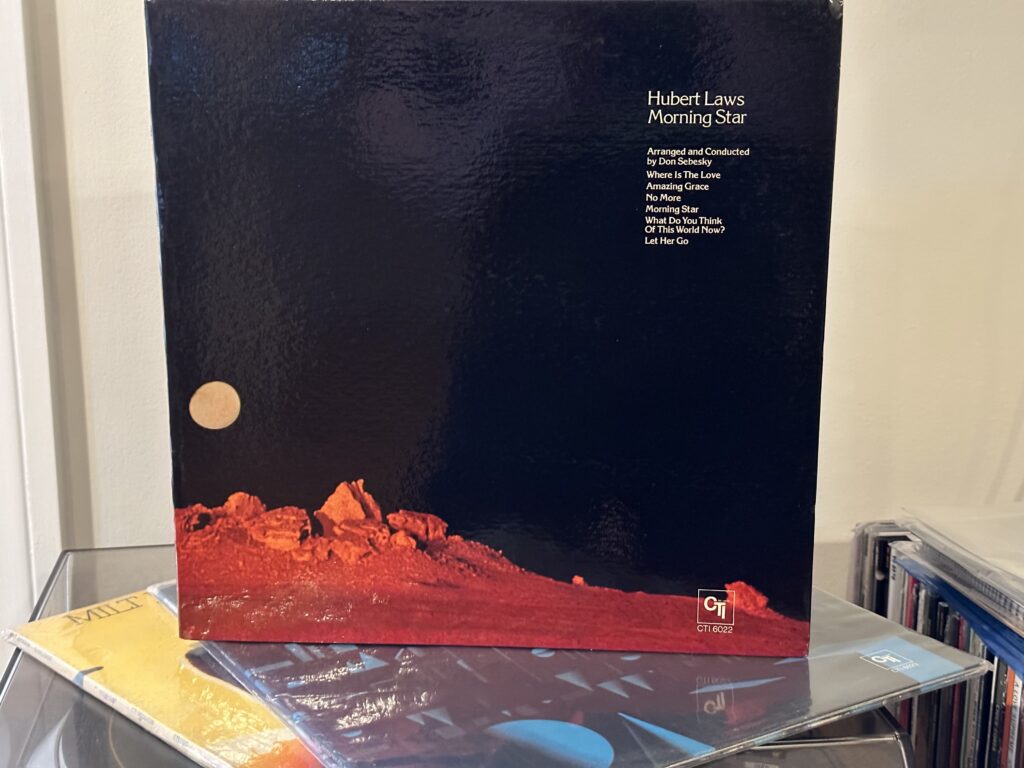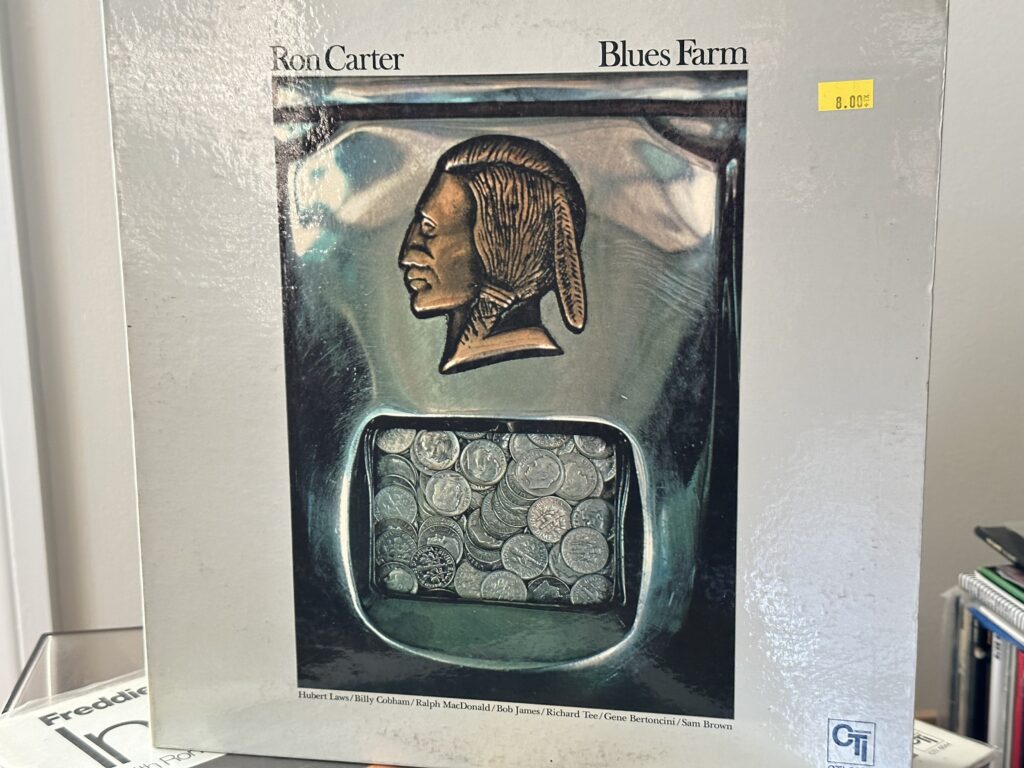
Album of the Week, June 24, 2023
This week’s lead artist has been in more essays in this column than anyone else save his former bandmates Miles Davis and Herbie Hancock, and that’s just because I haven’t written about many of the projects that he did outside the jazz sphere. The great bassist Ron Carter was not new to leading solo recordings, having recorded Where in 1961 with Eric Dolphy and Mal Waldron for New Jazz, Uptown Conversation in 1969 on Herbie Mann’s Embryo label, and Alone Together, a duo album with Jim Hall, the year before. But on this first album for CTI Records, the versatile bassist put together a collection of tracks that were more about the performance than the songs. The main effect of each track was to highlight Carter’s formidable skills as a bassist and, in some cases, shine a light on previously unrecorded capabilities as a soloist.
The backing band, which included the ever-stalwart Hubert Laws on flute, Richard Tee on electric piano and organ, Sam Brown on electric guitar, Billy Cobham on drums, and Ralph MacDonald on percussion, plus appearances from Bob James on three tracks and guitarist Gene Bertoncini on one, come to the session as supporters of Carter, consistently accompanying him rather than performing over top of the bass line. The way that Rudy Van Gelder records Carter’s bass throughout reminds me a little of the disclaimer that was always somewhere in the liner notes of Branford Marsalis’s albums for Columbia Records: “This album was recorded without the use of the dreaded bass direct, to get more wood sound from the bass.” Indeed, the close miking that Van Gelder uses eliminates a lot of the natural resonance of the wooden body of the bass—but at least it makes it so that the bass is practical as a lead instrument in the ensemble. (You have to turn up those Branford recordings pretty high to hear Bob Hurst in the mix, especially when Kenny Kirkland or Jeff “Tain” Watts are playing.)
At any rate, “Blues Farm” provides both one of the more memorable tunes on the album and an opportunity to hear Carter’s soloistic prowess. The melodic burden is carried by Hubert Laws on flute and Carter, playing both regular and piccolo bass. The piccolo, Carter’s preferred instrument for bass solos, has its strings pitched an octave higher than normal, which gives it two unique characteristics: it’s high enough in pitch to be heard as a solo instrument alongside the rest of the band, and the large range between notes of the scale on the bass fingerboard makes it rather more likely than on a smaller instrument that the bassist will hit pitches that fall between the strict pitches of the scale. Throughout, you can hear Carter turning this unusual characteristic into a feature of his performance using portamento to slide up and down into the desired pitch. The tune itself is a simple enough blues, but the arrangement between Laws and Carter gives it a jaunty air.
“A Small Ballad” is the most fragile, and unusual, composition on the record. Opening with a piano figure from Bob James that wouldn’t have sounded out of place on a Herbie Hancock record, the track yields to Carter’s solo bass, which pivots from a major to minor figure. The two duet with each other over a drum pattern played mostly on the cymbals by Cobham, with Carter playing a ground under James’ piano before switching to a more melodic solo on the bass. James recaps the melody on piano, before Carter recaps it once more, only playing the pivot notes, and only in octaves. It’s a quietly delightful performance.
“Django” begins as a quiet balladic statement, then after the first chorus veers into a swinging blues feel. Carter is the only solo voice throughout, with the rest of the band providing support behind him. The slow balladic section returns quickly after one round of improvisation, making one wonder what a fuller band treatment might have done with the tune.
“A Hymn for Him” is, as the title suggests, a gospel-inflected blues, with Carter’s bass duetting with Richard Tee for a solid five minutes before Hubert Laws provides his own bluesy solo. Here Carter displays his gift for solid, unshowy, in-the-pocket bass accompaniment in the first two verses before picking up the lead with a piccolo bass part which I suspect was overdubbed. Here his full range of harmonic and melodic imagination is at play, reaching for heights even as he spans up from the depths. Laws’ solo exchanges passages and ideas with Tee before he steps back to let the pianist himself be heard. (While I thought myself unfamiliar with Tee’s work, it turns out I know some of his output pretty well, as he was the studio musician heard on Paul Simon’s “Slip-Slidin’ Away” and Peter Gabriel’s “In Your Eyes.”)
“Two-Beat Johnson,” featuring a theme that shifts between 4/4 and 2/4, opens with a joint statement of the melody between Laws and Carter before Laws takes an extended solo exploring the changes of the work. The track feels like a lost Vince Guaraldi cue and is almost as short, lasting a mere 2:53. It segues swiftly into “R2, M1,” which explores some of the melodic ideas of “Two-Beat Johnson” but grafts them onto a samba beat. Here Carter marries his in-the-pocket accompaniment with some of the portamento styles honed on his piccolo solos, while Laws demonstrates his own usual excellence and virtuosity in the upper range of the flute’s register. Bob James provides a funkier breakdown on the melody before yielding to Carter and Cobham, who provide multiple variations on the groove without ever stepping fully into a melodic solo. It’s an interesting choice for the last track on the album as a result, and I think it highlights a fundamental truth of Carter’s playing: that he always soloed from the bass chair even as he kept his contributions direct and to the point, always focusing on playing, as he says, “the right note.”
So the first album with Carter as a leader shows him as a virtuoso on his instrument and begins to display his skills as an arranger. We’ll see more of the latter skill in the future. In the meantime, we’ll hear a few live performances from another CTI stalwart over the next few weeks.
You can listen to the album here:

